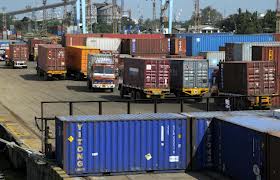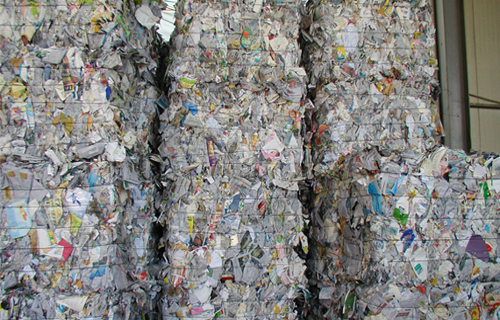Cell phones have been classified as hazardous material because of electromagnetic radiation and electronic composition. They contain substances such as antimony, arsenic, beryllium, cadmium,
copper, lead, nickel and zinc which belong to a class of chemicals known as persistent toxins, as they remain in the environment for long periods. Safe disposal of cell phones is necessary to protect the environment and health from a build-up of these toxins. Other environmental dangers associated with inappropriate disposal of cell phones is due to the electromagnetic radiation and electronic composition. A cell phone made of biodegradable material or made with recycled materials, helps reduce the problems of disposal due to toxic waste that piles up every year as cell phones are discarded.
In 2008, Nokia introduced 3110 Evolve, with a cover constructed from 50% renewable material and a charger that is 94% more energy efficient than the standards required by Energy Star. It is packaged with materials composed of 60% recycled content. Another option was the Sony Ericsson C901 that makes use of reduced packaging including the use of an in-phone electronic manual versus the traditional paper user manual. The phone’s housing is made of 50% recycled plastics and it possesses a light sensor that reduces the phone’s energy consumption.
Recently, Samsung Replenish has been introduced with more than 80% recyclable materials, housed in partially recycled plastics, energy efficient and built with fewer environmentally sensitive materials. Additionally, an optional solar charging battery cover made from Naturacell will be available for Samsung Replenish. Sprint has manufactured Samsung Replenish, an Android touch QWERTY smartphone- partially built with recycled plastics and recyclable packaging. It offers the following impressive eco-credentials:
• Reduced environmentally sensitive materials (RoHS compliant, free of intentionally added polyvinyl chloride (PVC), brominated flame retardants (BFRs), phthalates and beryllium)
• Energy efficient, with a charger that meets the EC Code of Conduct on Energy Efficiency of External Power Supplies, Version 4, as well as a visual alert for full charge
• Casing includes 34.6% post-consumer recycled plastic content (the highest level in our eco-portfolio) and 82% of the device is made from recyclable materials
• Fully recyclable packaging that incorporates 80% post-consumer waste material and uses soy inks.
• Includes a postage-paid envelope to recycle your old phone and promotes a virtual user guide available on the Sprint website.
Samsung has earlier introduced other eco friendly options like Samsung Restore that meets Sprint Eco-Criteria, including reduced environmentally sensitive materials, energy efficiency and use of recycled materials. The Samsung Restore M570 will try to restore the environmental balance with its 84% recyclable self, 100% recyclable packaging of cardboard, printed with soy ink. In addition, it will come with an energy-efficient charger. In 2009, Sprint became the first US carrier to introduce an eco-friendly phone, the Samsung Reclaim. More than just a showpiece, the Reclaim was simply the first step in Sprint’s larger green initiative. They have introduced many eco-friendly accessories, redesigned their packaging to reduce and even eliminate the use of plastics and spearheaded a nationwide phone recycling campaign.
Blue Earth is the first solar powered full touch screen cell phone which beautifully designed by Samsung. By charging with the solar panel located on the back of the phone, users can generate enough electronic power to call anytime, anywhere. This cell phone is made from recycled plastic called PCM, which is extracted from water bottles, helping to reduce fuel consumption and carbon emissions in the manufacturing process. Samsung Blue Earth mobile phone and the charger are free from harmful substances such as brominated flame retardants, beryllium and phthalate. It is made from recycled plastic bottles, sports a fancy touchscreen, and is embedded with solar panels on its back for easy natural charging. The software of the phone also comes with a new “Eco Mode” meant to allow the user to get the maximum amount of energy efficiency from the device. If Blue Earth charges in the sun for 10-14 hours it will provide up to around 4 hours of talk time. Or can be charged with a traditional wall outlet plug too. Samsung Evergreen is a messaging phone that follows its predecessors with a recycled body and packaging printed with soy ink, plus power-saving modes and indicators, and green-themed wallpapers and ringtones. Samsung’s Intensity II is another texting phone made from recycled materials.
Motorola Inc has introduced a cell phone made of recycled water bottles- the W233 Renew eco-friendly phone. It is reported to be the world’s first carbon-neutral phone. As well as using recycled materials for the plastic casing, the company also pledged to offset the carbon dioxide used in manufacturing, distribution and operation of the phone through investments in renewable energy sources and reforestation. Through an alliance with Carbonfund.org, Motorola offsets the carbon dioxide required to manufacture, distribute and operate the phone through investments in renewable energy sources and reforestation. When designing the packaging, Motorola was able to reduce its size by 22% and the box and all of the materials inside are printed on 100% post-consumer recycled paper. In addition, a postage-paid recycling envelope in box makes it easy to return your previous mobile phone for recycling at no cost. Renew was designed for eco-conscious consumers as well as the millions of people who put making phone calls as their number one priority in a mobile phone. It offers nine hours of talk time, CrystalTalk technology and messaging capabilities.
Source : www.plastemart.com





